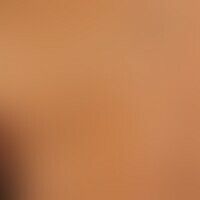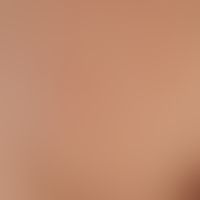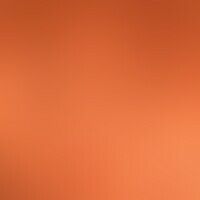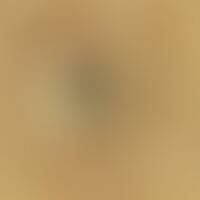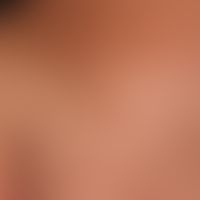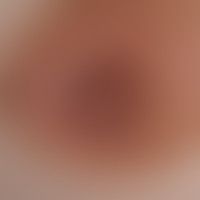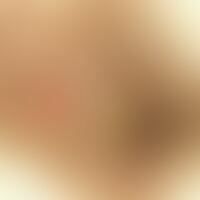Image diagnoses for "Torso", "Nodules (<1cm)", "brown"
46 results with 114 images
Results forTorsoNodules (<1cm)brown
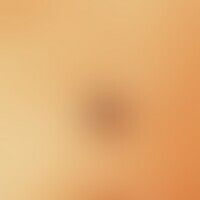
Keratosis seborrhoeic (overview) L82
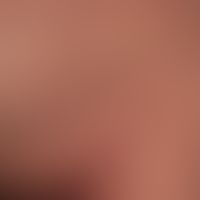
Galli-galli disease Q82.8
Galli-Galli, M. Disseminated, spotted, partly also confluent red-brown spots, papules and plaques.

Nevus spitz D22.-
Naevus Spitz: rapidly growing, irregularly pigmented tumor on the knee of a 5-year-old girl.
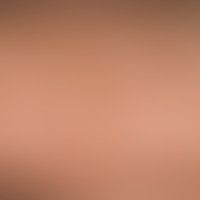
Extrinsic skin aging L98.8
Chronic light damage: poikiloderma after years of excessive UV exposure, including hyperpigmentation, depigmentation and numerous precanceroses of the actinic keratosis type.
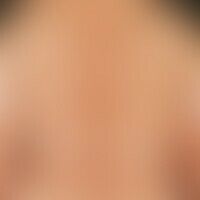
Neurofibromatosis (overview) Q85.0
Type I Neurofibromatosis, peripheral type or classic cutaneous form Peripheral neurofibromatosis with multiple skin-coloured to light brown, soft nodes and nodules, sometimes also stalked, bulging soft, skin-coloured dewlap on the left hip.

Keratosis seborrhoic (papillomatous type) L82
Keratosis seborrhoeic (papillomatous type): brown nodules with lobed and punched surface. sharp border. slight surface scaling.

Maculopapular cutaneous mastocytosis Q82.2
Urticaria pigmentosa: General view: Differently large, disseminated, flat, oval or round, brownish-red spots on trunk, buttocks and thighs; 27-year-old female patient.

Nevus melanocytic (overview) D22.-
Usual melanocytic nevus. Chronic stationary, 0.2-2.0 cm in size, sharply defined, soft, light to dark brown, indolent, smooth papules and plaques in the breast area of a 22-year-old woman. No increase in pigmentation or size is noticeable.

Dyskeratosis follicularis Q82.8
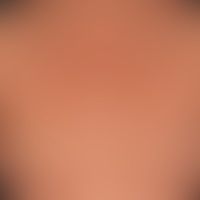
Early syphilis A51.-
Syphilis early syphilis: maculo-papular syphilide, in places aligned with the tension lines of the skin (some tension lines of the skin)
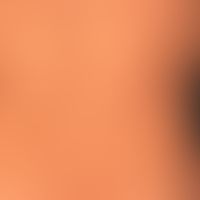
Neurofibromatosis (overview) Q85.0
type I neurofibromatosis, peripheral type or classic cutaneous form. numerous smaller and larger soft papules and nodules. several so-called café-au-lait spots.
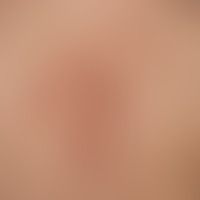
Neurofibromatosis (overview) Q85.0
type i neurofibromatosis, peripheral type or classic cutaneous form. numerous smaller and larger soft, predominantly pigmented, practical nodules and nodules. in the larger nodules the so-called "bell-button phenomenon" can be detected. the palpating finger penetrates the deep dermis as if through a fascial gap. few café-au-lait spots. papules and nodules. only isolated rather discreet café-au-lait spots.
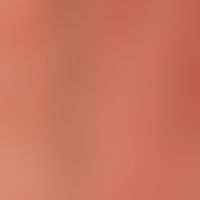
Leiomyoma (overview) D21.M4
Leiomyoma (marginal area): Missing follicular structure in lesional skin (right marked side); left normal skin with encircled follicles.

Keratosis seborrhoeic (overview) L82
Keratoses seborrhoeic: Multiple different sized,seborrhoeic tumors with a porous surface.
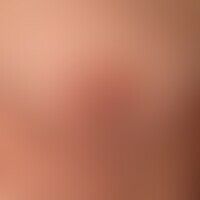
Neurofibromatosis (overview) Q85.0
Type I neurofibromatosis, peripheral type or classic cutaneous form. massive tumorous transformation of the skin with numerous generalized distributed, soft, skin-colored, partly pointed conical shaped neurofibromas on the left mamma. the CT examination (skull) did not reveal any pathological findings. no neurofibromas known in the family.
